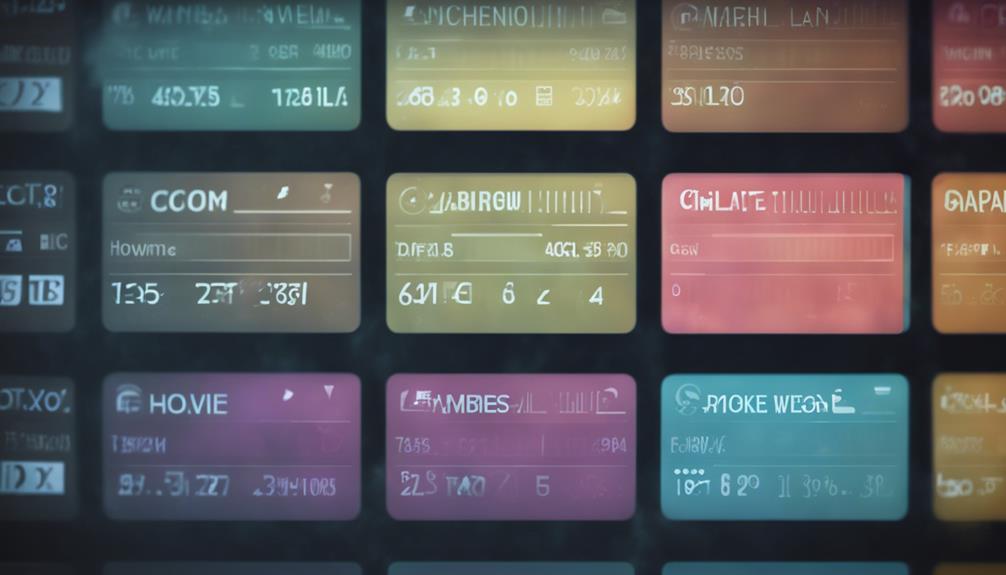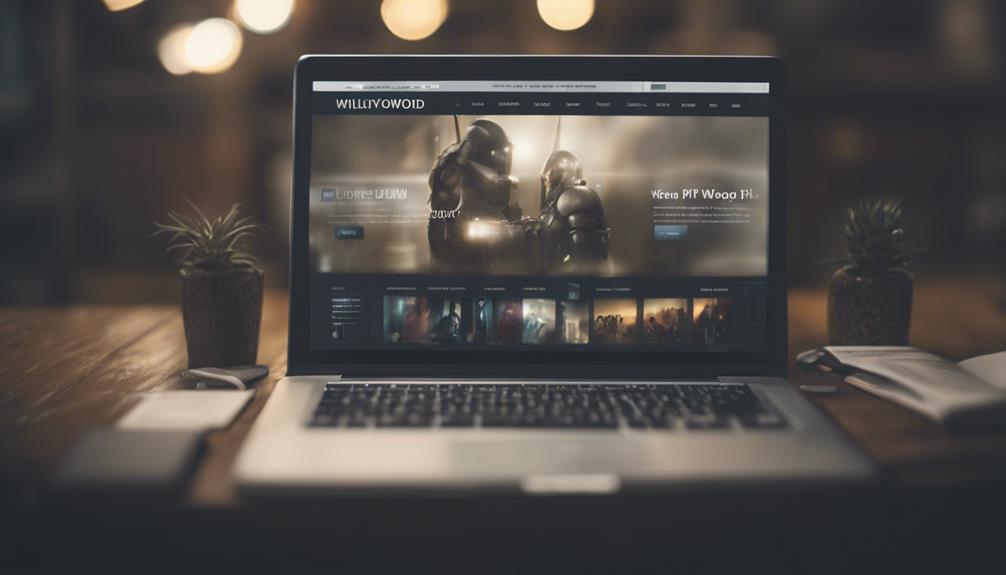Enhance your WordPress website layout with expert tips for widget optimization. Prioritize functionality aligned with your site needs. Consider content type and theme compatibility. Implement Call to Action and Recent Posts widgets for user engagement. Customize widget appearance to match brand identity. Experiment with different widget options for best layout. Maintain clear menu structures and user-friendly navigation. Utilize Social Sharing and UserFeedback widgets to boost engagement. Choose customizable themes for visual appeal. Focus on color schemes and high-quality images. These tips guarantee your widget use aligns with goals and enhances user experience seamlessly. Maximize the full potential of your WordPress site layout!
Choosing the Right Widgets
When selecting widgets for your WordPress layout, prioritize functionality that aligns with your website's specific needs. Consider the type of content you want to display and the features you require, such as social media integration, contact forms, or image galleries. Make sure the widgets you choose are compatible with your theme to guarantee seamless integration and peak performance. It's advisable to look for popular and highly rated widgets in the WordPress plugin directory, especially those tailored to social media widgets, to find reliable options for your layout needs.
Testing different widgets on a staging site before implementing them on your live website is essential. This step helps you avoid any disruptions or compatibility issues that may arise. Additionally, checking for responsive design features in widgets is vital to provide a consistent user experience across various devices and screen sizes. By carefully selecting widgets that cater to your website's requirements and ensuring their compatibility with your theme, you can enhance the functionality and appeal of your WordPress layout.
Enhancing User Experience
Enhance user experience on your WordPress site by strategically incorporating widgets that engage, guide, and promote interaction with visitors. To optimize user engagement and interaction, consider the following:
- Call to Action Widgets: Prompt users to take specific actions like subscribing to newsletters or making a purchase.
- Recent Posts Widgets: Keep visitors updated on your latest content, encouraging them to explore further.
- Social Media Share Widgets: Enable easy sharing of your content on various social platforms, expanding your reach.
- Navigation Widgets: Facilitate seamless site navigation, ensuring users can easily find what they're looking for.
- Customize Widget Appearance: Tailor the look and feel of your widgets to match your brand identity, creating a cohesive user experience.
Customizing Widget Designs

Customizing widget designs in WordPress allows you to create unique and branded visual elements on your website. By adjusting colors, fonts, and styles to match your brand identity, you can establish a cohesive look throughout your site.
Adding custom CSS to widgets provides the flexibility to fine-tune design details for a personalized touch. This level of visual customization not only enhances user engagement but also elevates the overall aesthetics of your site.
Tailoring widget designs to align with your brand's aesthetics can have a profound impact on user experience and brand perception. When customizing widgets, consider how these elements fit within the broader context of your WordPress theme to guarantee a seamless user experience.
Embracing the power of customized widgets can help you strengthen your brand identity and leave a lasting impression on visitors to your site.
Experimenting With Widget Options
To discover the most effective widget options for your WordPress layout, experiment with different combinations to optimize user engagement and overall visual appeal. Customizing widget placements can greatly enhance the functionality and aesthetics of your website.
Here are some tips to help you make the most out of your WordPress Widgets:
- Try Different Widget Areas: Explore various widget areas on your website to see where each widget fits best.
- Utilize Social Widgets: Incorporate social media widgets to encourage user interaction and sharing.
- Test Different Configurations: Experiment with different widget combinations to find the most user-friendly layout.
- Align Widgets with Website Goals: Make sure that the design and purpose of each widget align with the overall goals of your website.
- Enhance User Engagement: Use popular widgets like Recent Posts, Search, or Social Media to improve user engagement and site functionality.
Testing Widget Impact on Layout

When testing widget impact on your layout, focus on ensuring consistency across different pages and screen sizes. Evaluate how different widget placements affect user engagement metrics such as click-through rates and bounce rates.
Monitor loading speeds to guarantee peak performance with multiple widgets on your WordPress site.
Layout Consistency Testing
To evaluate the impact of widgets on layout consistency, it's crucial to conduct A/B testing. This method allows you to compare different versions of your layout to see which one performs better regarding user experience and engagement.
When testing layout consistency, consider the following:
- Monitor page load times before and after widget implementation.
- Check responsiveness across different devices for uniform display.
- Conduct user testing to gather feedback on layout changes.
- Use heatmaps and analytics to track user behavior.
- Make sure that the widget impact enhances rather than hinders the overall layout consistency.
Widget Placement Evaluation
Evaluate widget placement in various areas of your website to assess their impact on layout design. Test WordPress Widgets in the sidebar, footer, and header to determine which positions work best for user engagement and conversion rates.
Monitor how users interact with the widgets in different locations to optimize layout design for maximum impact. Analyze user behavior heatmaps and conversion metrics to inform widget positioning decisions.
Conduct A/B testing to compare the performance and aesthetics of your layout with different widget placements. By strategically evaluating widget placement, you can enhance user engagement, improve conversion rates, and create a more effective layout design that drives results.
Adjusting Widget Settings
With a few simple clicks in your WordPress dashboard, you can easily tailor the appearance and functionality of your widgets by adjusting their settings. Customizing widget settings allows you to align them with your website design seamlessly.
- Explore options for layout, colors, typography, animation, and content display preferences.
- Modify widget settings effortlessly through the WordPress dashboard or customizer for quick adjustments.
- Utilize custom CSS for fine-tuning widget settings for a more tailored and unique look.
- Guarantee top performance and user engagement by regularly reviewing and updating widget settings.
- Enhance the overall user experience by adjusting widget settings to match your website's aesthetics.
Optimizing Widget Selection

Start by making sure that the widgets you choose align seamlessly with your website goals and user needs when optimizing widget selection. Consider the purpose of each WordPress widget to guarantee it adds value to your site and caters to the expectations of your website visitors.
Evaluate the visual appeal and responsiveness of the widgets you add using a critical eye to maintain a cohesive layout and enhance the overall user experience. Opt for widgets that offer customization options, allowing you to match your brand aesthetics and design preferences effectively.
Prioritize widget functionality over quantity, selecting widgets that serve a specific purpose and avoid cluttering your layout unnecessarily. By focusing on key features that add value to your site, you can create a more engaging and user-friendly experience for your website visitors.
Regularly reviewing and updating your widget selection ensures that it stays relevant to changing trends, user feedback, and website performance metrics.
Improving Website Navigation
When improving website navigation, focus on creating a clear menu structure and user-friendly navigation paths.
By organizing content effectively and using intuitive labels, visitors can easily find what they're looking for on your site.
Consider implementing dropdown menus and regular updates to enhance the overall user experience.
Clear Menu Structure
Improving website navigation through a clear menu structure is crucial for enhancing user experience and guiding visitors efficiently to relevant pages. When optimizing your WordPress website, consider the following tips for a well-structured menu:
- Utilize dropdown menus: Streamline navigation by categorizing related pages or subcategories.
- Include descriptive labels: Provide clarity and context for users browsing your site.
- Maintain consistent menu placement: Guarantee a cohesive and intuitive navigation experience across all pages.
- Organize menu items logically: Help visitors find information quickly by structuring your menu items sensibly.
- Enhance user experience: Guide users effectively to the content they seek by improving your menu structure.
User-Friendly Navigation
Organize your website's navigation to enhance user experience by categorizing content effectively. Implement clear menu structures that guide visitors seamlessly through your site. Utilize descriptive labels and logical groupings to help users easily locate the information they seek.
Consider user behavior and preferences when designing your navigation to boost user engagement. Regularly test and optimize navigation elements based on user feedback and analytics data for improved usability.
To enhance navigation in WordPress, consider using a WordPress plugin to add widgets to the sidebar, providing users with quick access to important sections of your site. By prioritizing user-friendly navigation, you can create a more enjoyable browsing experience for your visitors.
Enhancing Engagement With Widgets

Enhance user engagement on your website with strategically placed widgets that facilitate interaction and improve user experience. Utilize the following widgets to boost engagement:
- Social Sharing: Increase visibility and engagement by enabling users to easily share content on various social media platforms.
- UserFeedback widgets: Gain valuable insights from visitors to understand preferences and enhance the overall site experience.
- Strong Testimonials widgets: Showcase positive feedback and reviews from satisfied customers to build credibility and trust.
- SearchWP widgets: Provide advanced search functionality for users to easily locate specific content on your website.
- Events Calendar widgets: Promote events, workshops, or webinars to drive engagement and boost audience participation.
Creating a Visually Appealing Design
To create a visually appealing design for your website, focus on utilizing a color scheme consistent with your brand to enhance recognition and engagement. When selecting WordPress themes, choose one that allows you to customize colors to align with your brand identity.
Incorporate high-quality images strategically throughout your website to captivate visitors and keep them engaged. Opt for a clean layout that organizes content logically, making it easy for users to navigate.
Utilize whitespace effectively to create a sense of balance and prevent overcrowding, allowing important content to shine. Select legible fonts that complement your design and guarantee readability across different devices. Remember, a harmonious combination of these elements won't only enhance the visual appeal of your website but also leave a lasting impression on your visitors.
Conclusion
As you navigate the world of WordPress layout widgets, remember to choose wisely, customize creatively, and test thoroughly.
By optimizing your widget selection, improving website navigation, and enhancing engagement, you can create a visually appealing design that enhances user experience.
So, keep experimenting, keep improving, and keep creating a layout that will captivate and inspire your audience.
Let your creativity shine through and watch your website come to life!



